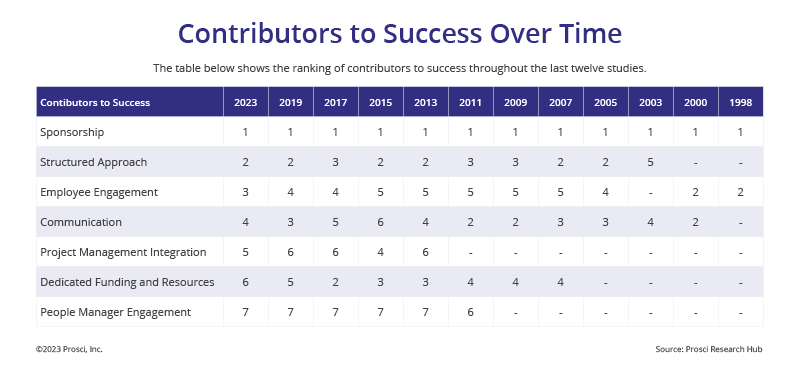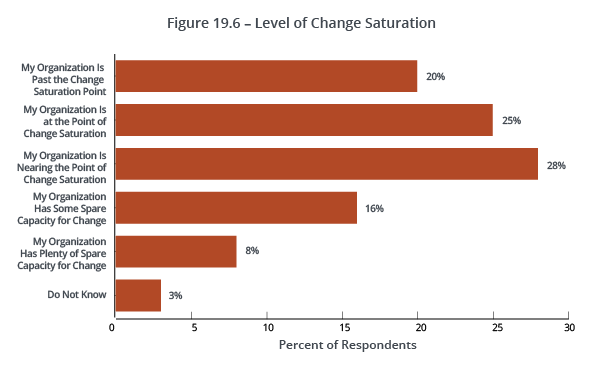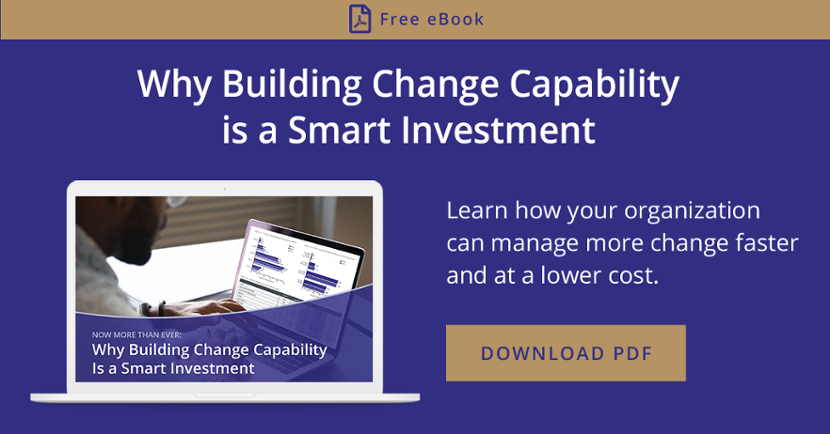
Managing change saturation also requires confirming that every member of your senior leadership team is fully committed to successful implementation of the initiatives in your change portfolio. And being realistic about your organization’s current capacity for change is critical. The pandemic's ongoing effects have stretched capacity for many, but retaining some capacity for unplanned, non-discretionary initiatives is recommended.
3. Use a structured approach for high-priority or high-risk change initiatives
This structured approach should include a people risk assessment to determine the amount of change management resources you need and the effort it will take to achieve your desired outcomes. Be sure to provide dedicated change management resources and funding. Don’t expect people to do change management “off the side of their desks.”
Prosci 3-Phase Process

4. Be a great sponsor of change in your organization
Active and visible executive sponsorship continues to be the most important contributor to success of change management initiatives. Prosci's Best Practices in Change Management research has revealed this truth consistently since 1998.

Success builds confidence and can help increase organizational change capacity. Be a role model for the ABCs of sponsorship and expect your direct reports to do the same:
- Actively and visibly participate throughout the life of the project
- Build a coalition of support
- Communicate directly with employees
5. Achieve, measure and sustain project benefits over time
Instead of defining the finish line on the project implementation date, set it for the date you expect to be able to sustain achievement of the desired benefits. The integrated project and change management plan for each initiative should include a sustainment phase as well. This ensures that project benefits continue once achieved and provides an effective handoff from the project team to the operating side of the organization.
Structuring executive team performance contracts to reward benefit realization and sustainment is also more effective than rewarding executives for initiating changes.
6. Stay constantly alert to signs of change saturation
Meeting regularly with individuals impacted by changes helps you stay attuned to their level of change saturation and resulting fatigue, which can affect various roles throughout your organization:
- People managers
Ask them questions based on the Prosci ADKAR Model (Awareness, Desire, Knowledge, Ability and Reinforcement) to assess their ability to effectively lead their teams through the changes. - Front-line employees
Engage regularly with these people being directly affected by current changes, and use the ADKAR Model to assess how well they are adopting and using the changes. - Sponsors and project managers
Look for evidence that they’re collaborating to address concurrent impacts from other initiatives, such as scheduling conflicts and resource constraints.
In addition to working directly with employee groups, monitoring customer satisfaction data can indicate the negative effects of current changes. Organizational health indicators, such as engagement scores, absenteeism rates and retention rates also offer insights about employee change fatigue. And, of course, anticipating these potential negative impacts as you plan future changes enables you address issues before they arise.
Change Saturation Is Real
As project teams focus on the many project initiatives flooding their business units, they risk missing the collective impact of the changes on the organization and your people. Keeping these strategies in mind can help you create a clear action plan for reducing change saturation effectively and as a focused, aligned change management team.





